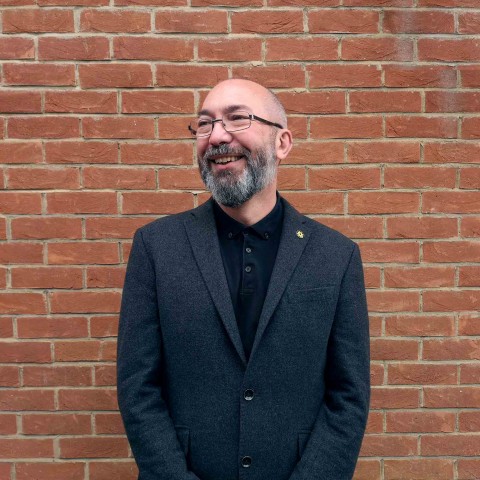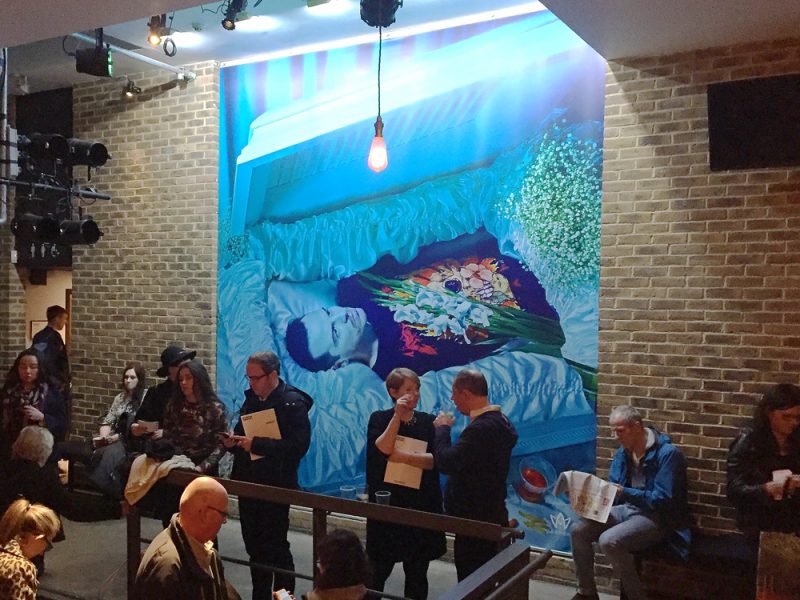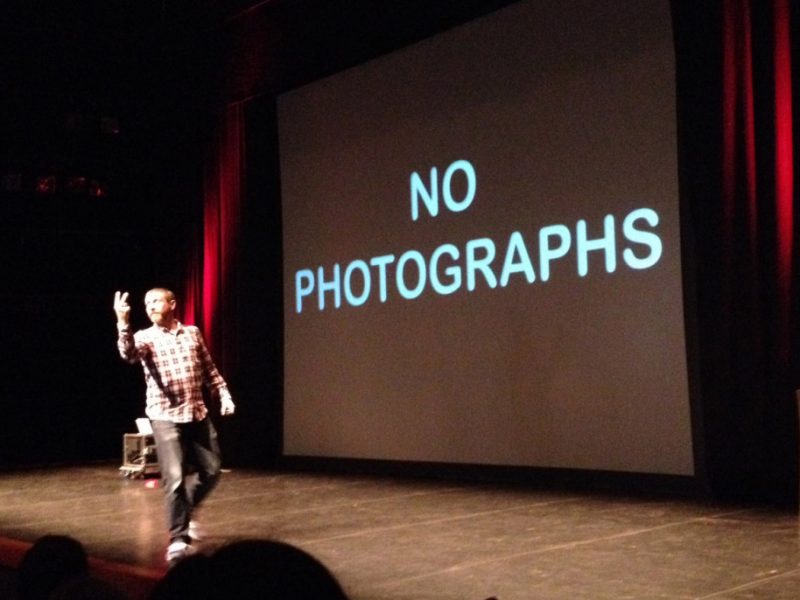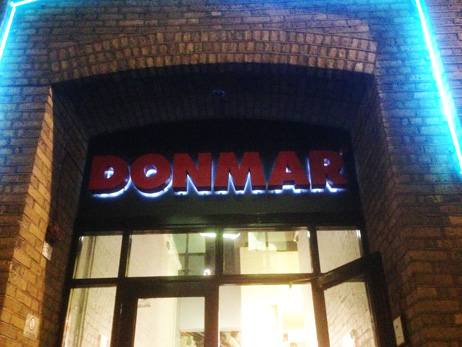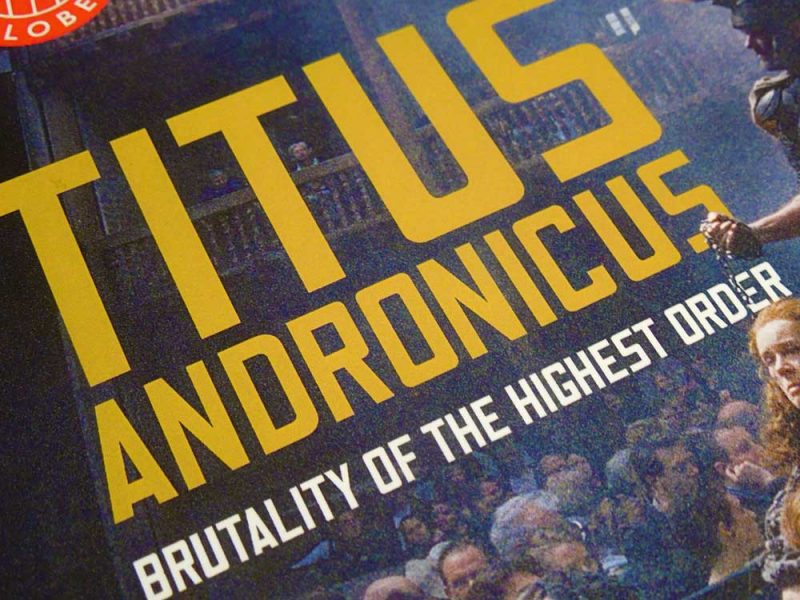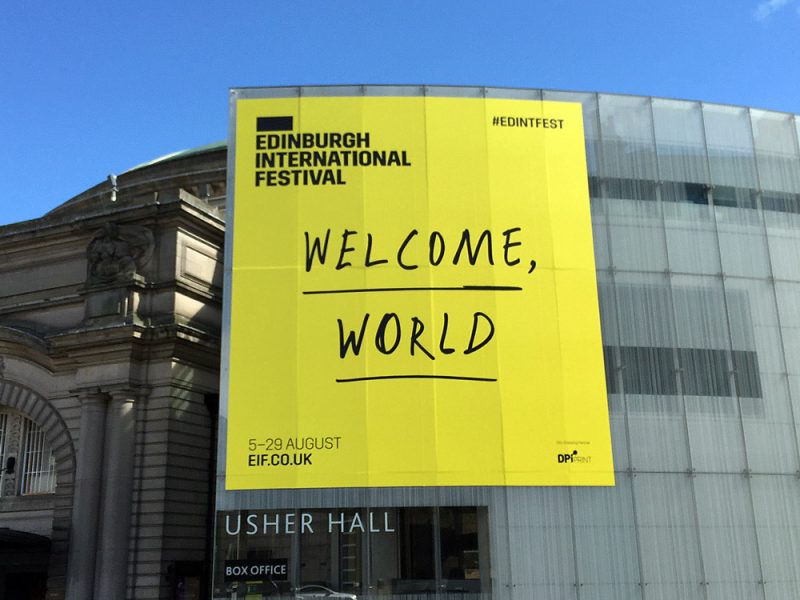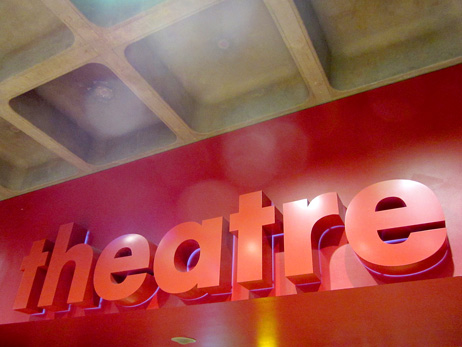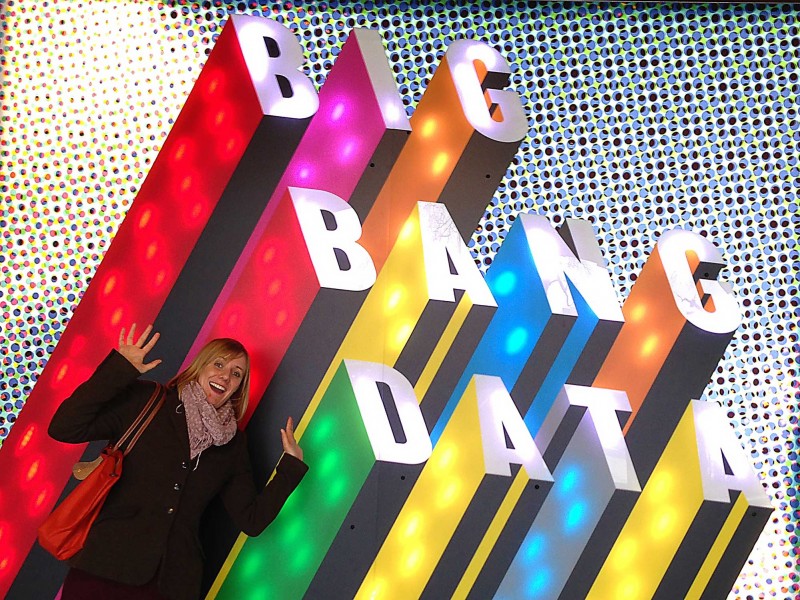For June’s Cog Night we went to Shakespeare’s Globe to see artistic director Michelle Terry as Hamlet. Jack reflects on this latest production.
Hamlet at Shakespeare’s Globe

You might be expecting a blow-by-blow account of Hamlet as a play, following the madness of the Dane from overwhelming grief to anger and to sadness. I’m sure there are lots of well-written synopses of the play to read elsewhere.
Instead, I thought I would focus on some of the joys and differences in this version. Some newly introduced to Shakespeare’s play and some bringing a new light to the original text.
To set the scene, for those who aren’t familiar, the play opens with Prince Hamlet returning to Denmark shortly after his father’s death to find his uncle, Claudius, on the throne and quickly married to his mother.
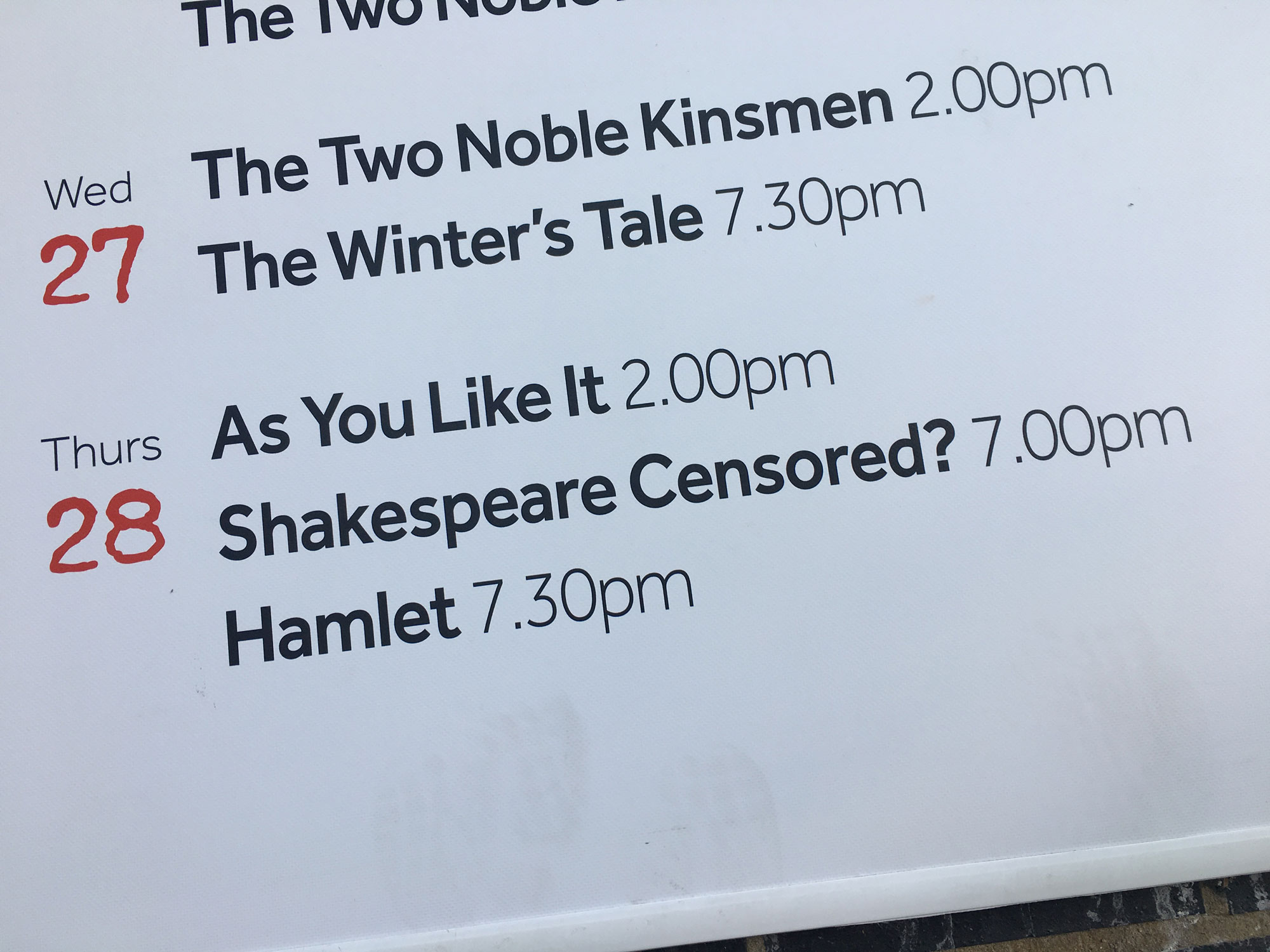
The Globe’s schedule, showing the range of productions that the company perform throughout the summer.
I’ve seen a lot of Shakespeare over the years, not least because I used to work at Shakespeare’s Globe. I’ve probably seen half a dozen productions of Hamlet, some at the Globe and some of those I saw more than once.
I was particularly excited to return to the Globe to see Michelle Terry take on the role in her first season as the venue’s artistic director. Actually it was the first time that I had been back to the theatre since previous artistic director, Dominic Dromgoole left (and Emma Rice took on the stewardship of the space for two seasons).
It was some of the Cog team’s first time at the Globe. Rather then sit on the wooden benches around the edge, we opted to stand in the Yard as Groundlings – an Elizabethan term used to describe someone who was too poor to pay to sit and so stood in the Yard. One of the benefits is that you’re able to get close to the stage and the actors, plus the tickets are only five pounds.

Entrance to the Yard of the Globe Theatre
The thought of standing for three hours may not sound appealing to first-timers, but once you find your comfortable stance it’s just about bearable, and it’s amazing to be surrounded by hundreds of people staring up at the stage.
The stage design for Hamlet has been kept quite minimal. As a space, the Globe demands that we use our imaginations. Through the text, we visualise the court of Elsinore, the battlements in which the ghost appears, and the graveyard where Ophelia is laid to rest.

Inside the Globe Theatre, waiting for the start
The costume design ranges from renaissance costumes – for the noble characters – to what you could call modern dress for other characters.
For the buffs, the costume design is a nice nod to Shakespeare’s time. During Shakespeare’s time, a person’s clothing reflected their status within society. So on stage only the noble characters wore costumes to show their status. Many other actors would have worn their everyday clothing.
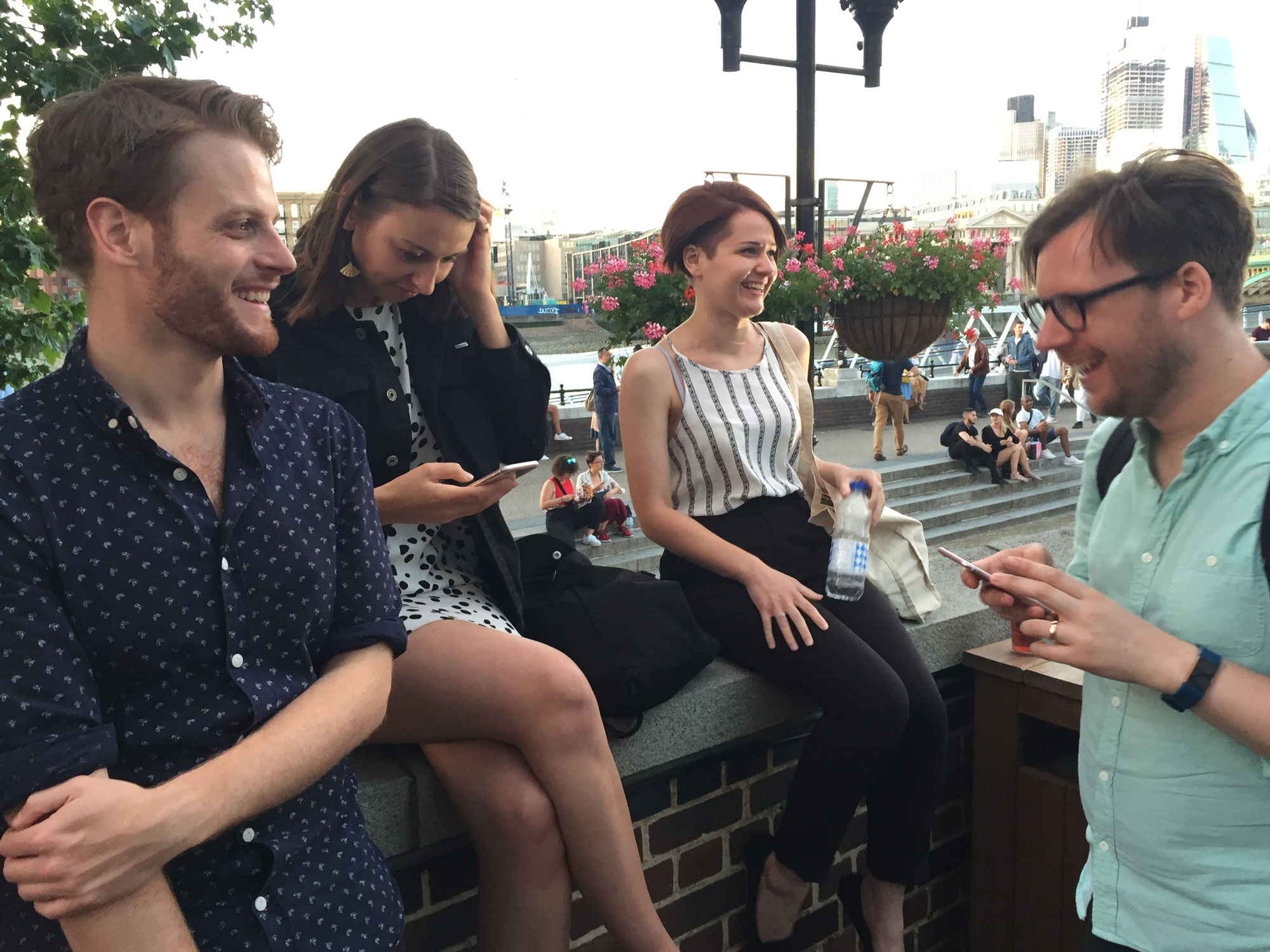
The team exchanging thoughts about the first act during the interval
Michelle Terry plays the role of melancholic Hamlet fantastically. She knows how to fill the vastness of the theatre with her voice and the stage with her presence. Through the play we see the true mixes of Hamlet’s delicate emotions (never easy whilst projecting the character in an open-air space).
James Garnon portrays a loud, brash and arrogant Claudius, a character who we instinctually feel that we should hate. After all he has murdered his brother to take the throne. There is a moment though, where he is practicing his apologies, whilst in prayers, where he is free of guilt. He doesn’t see his actions as wrong, he sees his coronation as his destiny, denied to him by his brother.
Pearce Quigley portrays Rosencrantz with his usual dry humour, bringing welcome lightness to the heavy shade of the story. Some of you may remember Pearce as his hilarious portrayal of Bottom in A Midsummer Night’s Dream at the Globe in 2013 (or recognise him from many sardonic supporting roles on the telly).
Accompanying Pearce is Deaf actor Nadia Nadarajah, in the role of Guildenstern. Nadia’s lines have been translated from the original text into British Sign Language (BSL). It is beautiful to see. The actors that she shares scenes with adapt their lines to bring context, without purely repeating and speaking Nadia’s words, in response. The ensemble also takes on elements on BSL to beautifully weave it through the scenes and include Nadia.
The character whose story was particularly pronounced for me, in this production, is that of Ophelia. For me, she is the only character who is innocent.
At first the text could mislead you to think that Hamlet and Ophelia’s love for one another is very one-sided. Their relationship is only mentioned in conversation with others, we’re never privy to a love scene between them. We often see Hamlet mocking the idea of his love for Ophelia, yet she continues to show her affection.
It is only after Ophelia’s death, following scenes of manipulation by just about every character, that we hear of Hamlet confess his love for her.
For many reasons this production made me fall in love with Hamlet all over again. The ensemble, the direction and treatment of the text, weaving BSL throughout, the sheer belief in the play by everyone involved. I’d strongly recommend an evening out on Bankside to see it before it finishes.
Maybe I should mention the gender-neutral casting. But it only deserves the briefest of mentions because it really is inconsequential.
It certainly won’t be the last Hamlet that I see, but it’s one that will stay with me for a long time.
Illustration by Eleonora Arosio for our Cultural Calendar.


